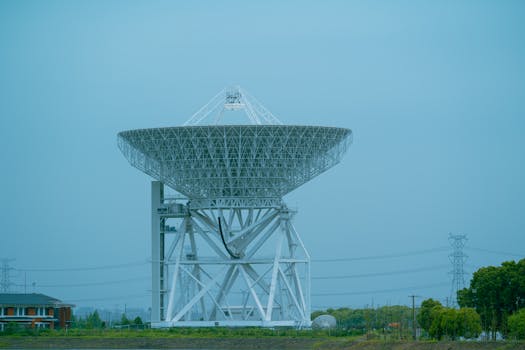
Satellite Telecommunications 2023: What’s New and What’s Next? Satellite Telecommunications
The satellite telecommunications industry is experiencing a significant transformation, driven by advances in technology, increasing demand for global connectivity, and the need for more efficient and resilient communications systems. As we move forward in 2023, it’s essential to examine the current state of the industry, emerging trends, and future developments that will shape the landscape of satellite telecommunications.
One of the most notable trends in satellite telecommunications is the growing adoption of low-Earth orbit (LEO) satellites. LEO satellites offer several advantages, including lower latency, higher bandwidth, and reduced costs compared to traditional geostationary satellites. Companies like SpaceX, OneWeb, and Amazon’s Kuiper Systems are leading the charge in LEO satellite constellations, with plans to launch thousands of satellites in the coming years. These constellations will provide global coverage, enabling high-speed internet access, IoT connectivity, and a range of other services.
Advances in Satellite Technology
Recent advances in satellite technology are also driving innovation in the industry. The development of phased array antennas, for example, allows for more efficient and flexible use of satellite bandwidth. Additionally, the use of advanced materials and manufacturing techniques is enabling the production of smaller, lighter, and more powerful satellites. These advancements are making satellites more affordable, accessible, and capable of supporting a wide range of applications, from telecommunications to Earth observation and navigation.
The increasing use of artificial intelligence (AI) and machine learning (ML) in satellite telecommunications is another significant trend. AI and ML can be used to optimize satellite operations, improve network performance, and enhance cybersecurity. For instance, AI-powered systems can analyze satellite data to predict and prevent outages, while ML algorithms can optimize satellite routing and resource allocation to ensure maximum efficiency.
Future Trends and Developments
Looking ahead, several trends and developments will shape the future of satellite telecommunications. The growing demand for 5G and 6G connectivity, for example, will drive the need for more advanced satellite systems that can support high-speed, low-latency communications. The integration of satellite and terrestrial networks will also become more prevalent, enabling seamless connectivity and ubiquitous coverage. Furthermore, the use of quantum computing and cybersecurity technologies will become increasingly important in protecting satellite communications from cyber threats and ensuring the integrity of sensitive data.
In conclusion, the satellite telecommunications industry is undergoing a rapid transformation, driven by technological innovation, changing market demands, and the need for more efficient and resilient communications systems. As we look to the future, it’s clear that satellite telecommunications will play an increasingly important role in enabling global connectivity, supporting economic growth, and improving quality of life.




